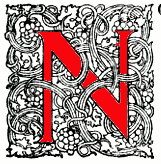
ew Rugby, in Tennessee, thirty-five hours' rail from New York, through probably some of the finest scenery in the United States, is in the heart of the beautiful wooded Cumberland plateau, about 1,590 feet above sea-level. It is a pretty Anglo-American village settlement in the woods, now being extensively cleared and cultivated by the settlers. Grasses, vegetables, and fruits of all kinds (especially vines), and tobacco, and many kinds of cereals flourish, while the woods themselves, consisting largely of oak, walnut, hickory, maple, and other timber, furnish at once by the process of clearing a first crop of considerable money value. Founded in 1880 by the joint exertions of Mr. Thomas Hughes, Q.C. and late M.P., the well known author of “Tom Brown's Schooldays,” and other similar works, and some benevolently inclined American gentlemen of Boston and New York, to supply a want then existing of an outlet for stagnant labour in both countries, it is only now emerging into full life from the infantile difficulties inevitable in such experiments. The beauty of its woodland and hill and river scenery, and the salubrity of its climate, are now constantly attracting a stream of visitors travelling down the picturesque Cincinnati Southern Railway, recently opened as a through route from north to south of the United States. No visitors go without wishing to repeat their visit, and many stay and settle.

Christ Church and Public School. [Click on images to enlarge them.]
The enterprising projectors have done more for the settlers than for themselves, for as yet they have not returned a penny of profit on their investment. A church (shown in print) with two schoolrooms on the ground floor, and the church above them, an hotel called the “Tabard Inn,” and which is said to contain a relic of the timber which once formed part of that ancient hostelry in the Borough, a cottage hospital (happily not wanted as such, and now let to a settler), a General Store or Commissary on our Civil Service Supply Association plan, in which every settler can buy a share for a nominal sum, stables, a sawmill, and other buildings, a Post Office, and Money Order Office, a telephone to the railway (six miles), which puts the settlement in telegraphic communication with England, and last not least, the “Hughes Free Public Library,” a pretty building erected and endowed with 6,000 volumes by the great publishing firms in America and other admirers of Tom Hughes, all attest the life and energy of the place.

The Hughes Public Library.
Here also lives the venerable mother of “Tom" herself, aged over eighty, and living in the pretty cottage (shown on page 320), with her son, Mr. H. Hughes, and her amiable but motherless grand-daughter.

Residence of Mrs. Hughes
The village has its newspaper, the Rugbeian, or Plateau Gazette, supported entirely by the settlers, and to which “Tom” is a frequent contributor. Its office is shown in the sketch.
No intoxicating liquors are sold or used in the place except as medical necessities, and the climate is such that nobody seems to require them. By an excellent law of Tennessee no public-house or drinking saloon is allowed within a radius of four miles from a school.
An effort is now being made to supply a want much expressed by good American people, viz., to establish in New Rugby a real “Rugby School” on the English model. Mr. Silvanus Wilkins, an old fellow-worker with Mr. Hughes and Charles Kingsley and F. D. Maurice, in former days, is now in the United States engaged on this work, in co-operation with some eminent American gentlemen. A Head Master, an old Rugby boy himself-since graduated at Oxford—is already found and ready, so soon as the school can be erected.

Office of the “Rugbeian”
Each Long Vacation, as it liberates “Tom ” from his duties of County Court Judge, finds him on his trip across the Atlantic to visit his aged mother, who is the centre of life of the place. Among the settlers are found a Boston physician of high attainments, who for his own health has betaken himself here, and employs himself in the cultivation of the vine and other fruits, some wealthy Australians seeking health, some higher class Americans on the same errand; an “honours” man from Cambridge, brother of the Head Master of Clifton; and many from all parts of the Old as well as the New Country, who help to make a very pleasant social community of a somewhat higher and less rough character than is usually the case with new settlements.
As a place of resort for health, pleasure, sport, and recreation, it seems likely to become highly sought, and although, perhaps fortunately for the preservation of its beauty and rusticity, the process of clearing and cultivation may not make fortunes very rapidly, the gradual, but certain, though silent, increase in the value of the land must not less surely, as settlement progresses, make the settlers in this little Arcadia prosperous, and ultimately wealthy.
Our illustrations are from sketches taken by Mr. Alfred Kimber, a member of the New York Stock Exchange.
Related Material
Bibliography
“New Rugby, in Tennessee.” The Graphic 30 (27 September 1884): 318, 320. Hathi Trust online version of a copy in the New York Public Library. Web/ 27 July 2021.
[You may use the images above without prior permission for any scholarly or educational purpose as long as you (1) credit the Hathi Trust Digital Library and the New York Public Library and (2) link your document to this URL in a web document or cite the Victorian Web in a print one. — George P. Landow]
Created 27 July 2021
Last modified 29 April 2025